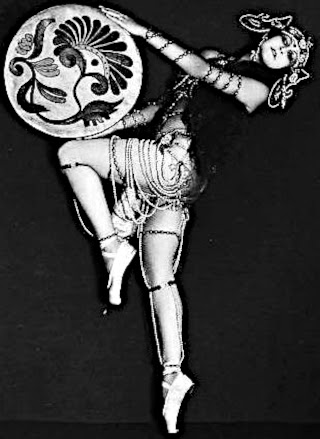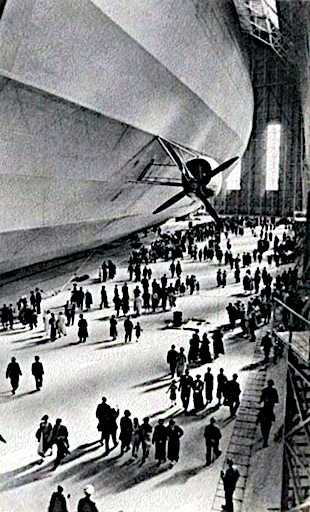This is the kind of situation that tends to wobble forward from momentum until it hits a crack in the pavement, some trigger event, then topples into a ditch and a full blown crisis, often when we least expect it.
I have not been reading many other financial blogs lately, giving more time to family and preparing for what is to come. I wonder if the more strident true believers in a stronger dollar through deflation have relaxed belief in the improbable yet, or if they are still flogging the data to support a mistaken theory.
Its one thing to be wrong. Everyone is, at one time or another, including yours truly. But its especially costly, sometimes fatally so, to be stubborn after your time has come and gone.
If equities take another leg down, as we suspect they will, then the dollar will strengthen once again, perhaps impressively. But it is just a shifting in allocations in a dollar universe that is changing, often slowly, into something that will likely be quite different, as in a black swan event.
As you know the position we took on this question was to make the case that in a fiat currency regime a range of outcomes are technically possible (and still are). But the probability of inflation was overwhelming when the facts were considered dispassionately.
As a general rule, the louder the rhetoric, the weaker the case to be made for a viewpoint.
Look at the data and be guided by it in all other things of this world.
Bloomberg
Dollar Declines as Slump Prompts Nations to Mull Alternative
By Oliver Biggadike and Matthew Brown
June 2 (Bloomberg) -- The dollar dropped to its lowest level against the euro this year on speculation record U.S. borrowing will undermine the greenback, prompting nations to consider alternatives to the world’s main reserve currency.
The 16-nation euro gained for a fourth day versus the dollar as the Russian government said emerging-market leaders may discuss the idea of a supranational currency. The pound strengthened to $1.65 for the first time since October.
“There’s been a lot of talk out of Russia about a new global currency, and that’s contributing toward this latest bout of dollar weakness,” said Henrik Gullberg, a currency strategist at Deutsche Bank AG in London. “These latest comments are just adding to the general dollar weakness we’ve seen recently...”
Russian Proposal
Russian President Dmitry Medvedev may discuss his proposal to create a new world currency when he meets counterparts from Brazil, India and China this month, Natalya Timakova, a spokeswoman for the president, told reporters by phone today. Medvedev first proposed seeking alternatives to the U.S. dollar as a reserve currency in March.
The dollar also declined on speculation “smaller” central banks started today’s selling of the greenback, said Sebastien Galy, a currency strategist at BNP Paribas SA in New York.
“If people believe that there is official pressure behind it, then obviously it puts pressure on euro-dollar on the upside,” Galy said. Galy predicted the 16-nation currency may reach $1.4360 today, a peak last reached in December.
There will be demand for the record amount of debt the U.S. is selling, Treasury Secretary Timothy Geithner said in an interview earlier today with state media outlets in China.
China’s ‘Understanding’
China has a “very sophisticated understanding” of why the U.S. is running up budget deficits, Geithner said in Beijing, pledging to rein in borrowing later.
“Despite the more comforting words we’ve had from the Chinese to the U.S. overnight, it does seem that the world’s reserve managers are still concerned about exposure to the dollar,” said Ian Stannard, a foreign-exchange strategist in London at BNP Paribas SA...
‘Last Stage’
The euro’s rally against the dollar may be entering its “last stage,” and investors would likely benefit from selling the 16-nation currency against the greenback, UBS AG said.
Europe’s currency is poised to weaken toward $1.30, analysts led by Mansoor Mohi-uddin, Zurich-based chief currency strategist at the world’s second-biggest foreign-exchange trader, wrote in a note to clients yesterday. The analysts reiterated forecasts for the euro to trade at $1.40 in one month’s time and weaken to $1.30 in three months.
“We remain positive on the U.S. dollar and think that the greenback is likely in its final stage of weakness,” the analysts wrote. “Equity and bond flows have the potential to surprise and could lend support to the dollar.”
To contact the reporters on this story: Oliver Biggadike in New York at obiggadike@bloomberg.net; Matthew Brown in London at mbrown42@bloomberg.net
02 June 2009
A Stronger Dollar: After Many a Summer Dies the Swan
Arthur Levitt Hired by Goldman Sachs
 Arthur is often trotted out as an independent analyst and pundit on financial news programs. His name has been floated for some of the top regulatory jobs in the Obama Administration.
Arthur is often trotted out as an independent analyst and pundit on financial news programs. His name has been floated for some of the top regulatory jobs in the Obama Administration.
Goldman does not require advice from Arthur Levitt. People like Art and Larry Summers are hired for their connections, insider knowledge, and for future services to be rendered. In this case Arthur will be offering to help to shape the evolving regulatory structure as it is 'reformed.'
Arthur Levitt to Serve as Advisor to Goldman Sachs
NEW YORK -- (Business Wire) --
The Goldman Sachs Group, Inc. (NYSE: GS) today announced that Arthur Levitt has agreed to serve as an advisor to Goldman Sachs. In this capacity, he will provide strategic advice to the firm on a range of matters, including those related to public policy.
“ArthurÂ’s experience and deep knowledge of our industry will be of tremendous value to our firm,” said Lloyd C. Blankfein, Chairman and Chief Executive Officer of The Goldman Sachs Group, Inc. “We look forward to having the benefit of his insight on a range of issues relating to the firm and financial services in general.”
Mr. Levitt was the 25th Chairman of the U.S. Securities and Exchange Commission and its longest serving Chairman. He began in this role in July 1993 and left the Commission in February 2001.
Before joining the SEC, Mr. Levitt owned Roll Call, a Washington D.C.-based newspaper that focuses on the US government. He also served as the Chairman of the New York City Economic Development Corporation, Chairman of the American Stock Exchange and President of Shearson Hayden Stone. He is presently a Senior Advisor to The Carlyle Group, Promontory Financial Group, Getco and serves on the board of Bloomberg LP...
.
The Carbon Trade and Enron: An Inconvenient Truth
"Cap and Trade" is an indirect tax on the real economy by those in the financial services sector.
It creates no wealth, it limits no pollution per se. It is a transfer mechanism, from the many to the few.
National Post
Enron's other secret
By Lawrence Solomon
In the climate-change debate, the companies on the ‘environmental’ side have the most to gain.
We all know that the financial stakes are enormous in the global warming debate many oil, coal and power companies are at risk should carbon dioxide and other greenhouse gases get regulated in a manner that harms their bottom line. The potential losses of an Exxon or a Shell are chump change, however, compared to the fortunes to be made from those very same regulations.
The climate-change industry the scientists, lawyers, consultants, lobbyists and, most importantly, the multinationals that work behind the scenes to cash in on the riches at stake has emerged as the world’s largest industry. Virtually every resident in the developed world feels the bite of this industry, often unknowingly, through the hidden surcharges on their food bills, their gas and electricity rates, their gasoline purchases, their automobiles, their garbage collection, their insurance, their computers purchases, their hotels, their purchases of just about every good and service, in fact, and finally, their taxes to governments at all levels.
These extractions do not happen by accident. Every penny that leaves the hands of consumers does so by design, the final step in elaborate and often brilliant orchestrations of public policy, all the more brilliant because the public, for the most part, does not know who is profiteering on climate change, or who is aiding and abetting the profiteers.
Some of the climate-change profiteers are relatively unknown corporations; others are household names with only their behind-the-scenes role in the climate-change industry unknown. Over the next few weeks, in an extended newspaper series, you will become familiar with some of the profiteers, and with their machinations. This series begins with Enron, a pioneer in the climate-change industry.
Almost two decades before President Barack Obama made “cap-and-trade” for carbon dioxide emissions a household term, an obscure company called Enron a natural-gas pipeline company that had become a big-time trader in energy commodities had figured out how to make millions in a cap-and-trade program for sulphur dioxide emissions, thanks to changes in the U.S. government’s Clean Air Act. To the delight of shareholders, Enron’s stock price rose rapidly as it became the major trader in the U.S. government’s $20-billion a year emissions commodity market.
Enron Chairman Kenneth Lay, keen to engineer an encore, saw his opportunity when Bill Clinton and Al Gore were inaugurated as president and vice-president in 1993. To capitalize on Al Gore’s interest in global warming, Enron immediately embarked on a massive lobbying effort to develop a trading system for carbon dioxide, working both the Clinton administration and Congress. Political contributions and Enron-funded analyses flowed freely, all geared to demonstrating a looming global catastrophe if carbon dioxide emissions weren’t curbed. An Enron-funded study that dismissed the notion that calamity could come of global warming, meanwhile, was quietly buried.
To magnify the leverage of their political lobbying, Enron also worked the environmental groups. Between 1994 and 1996, the Enron Foundation donated $1-million to the Nature Conservancy and its Climate Change Project, a leading force for global warming reform, while Lay and other individuals associated with Enron donated $1.5-million to environmental groups seeking international controls on carbon dioxide.
The intense lobbying paid off. Lay became a member of president Clinton’s Council on Sustainable Development, as well as his friend and advisor. In the summer of 1997, prior to global warming meetings in Kyoto, Japan, Clinton sought Lay’s advice in White House discussions. The fruits of Enron’s efforts came soon after, with the signing of the Kyoto Protocol.
An internal Enron memo, sent from Kyoto by John Palmisano, a former Environmental Protection Agency regulator who had become Enron’s lead lobbyist as senior director for Environmental Policy and Compliance, describes the historic corporate achievement that was Kyoto.
“If implemented this agreement will do more to promote Enron’s business than will almost any other regulatory initiative outside of restructuring of the energy and natural-gas industries in Europe and the United States,” Palmisano began. “The potential to add incremental gas sales, and additional demand for renewable technology is enormous.”
The memo, entitled “Implications of the Climate Change Agreement in Kyoto & What Transpired,” summarized the achievements that Enron had accomplished. “I do not think it is possible to overestimate the importance of this year in shaping every aspect of this agreement,” he wrote, citing three issues of specific importance to Enron which would become, as those following the climate-change debate in detail now know, the biggest money plays: the rules governing emissions trading, the rules governing transfers of emission reduction rights between countries, and the rules governing a gargantuan clean energy fund.
Palmisano’s memo expressed satisfaction bordering at amazement at Enron’s successes. The rules governing transfers of emission rights “is exactly what I have been lobbying for and it seems like we won. The clean development fund will be a mechanism for funding renewable projects. Again we won .... The endorsement of emissions trading was another victory for us.”
Palmisano’s hard work had paid off, thanks to the many allies Enron had enlisted. Deserving special emphasis was the environmental community, whose endorsement was crucial to Enron’s achievements at Kyoto.
“Enron now has excellent credentials with many ‘green’ interests including Greenpeace, WWF [World Wildlife Fund], NRDC [Natural Resources Defense Council], German Watch, the U.S. Climate Action Network, the European Climate Action Network, Ozone Action, WRI [World Resources Institute] and Worldwatch. This position should be increasingly cultivated and capitalized on (monetized),” Polisano explained.
With this company, Enron had been propelled to a leadership position at Kyoto. Palmisano had been given no less than three occasions for speeches, including one on the role of business in promoting clean energy, and he had received an award on behalf of Enron: The Climate Institute honoured Kenneth Lay and Enron for their work promoting clean-energy solutions to climate change the other recipients were Denmark’s energy and environment minister and the U.K.’s former environment minister. As Palmisano noted: “Parenthetically, I heard many times people refer to Enron in glowing terms. Such praise went like this: ‘Other companies should be like Enron, seeking out 21st-century business opportunities,’ or ‘Progressive companies like Enron are ...’ or ‘Proof of the viability of market-based energy and environmental programs is Enron’s success in power and SO2 trading.’”
Palmisano’s three-page memo from Kyoto, which suggested that the Kyoto Protocol could work out even better than he had expected, stressed the need for urgency to capitalize on the opportunities that would now be on offer: “I now predict ratification within three years. I predict business opportunities within 18 months. I predict this agreement will have very significant influences on the energy sector within OECD and transitional economies and will accelerate renewable markets in developing countries. This agreement will be good for Enron stock!!”
The groundwork had been laid well, not least by entering into relationships with scientists who, Enron expected, would further its cause (James Hansen, the scientist who more than any other is responsible for bringing the possibility of climate-change catastrophe to the public, was among the scientists Enron commissioned). Just as shrewdly, Enron saw the importance in silencing the scientists who didn’t accept the alarmism that had driven the Kyoto Protocol. In a 1998 letter, Enron CEO Ken Lay, among others, asked president Clinton to appoint a bi-partisan “Blue-Ribbon Commission” designed to pronounce on the science and, in effect, marginalize the skeptics.
The precise commission that Lay demanded didn’t happen but the general marginalization of scientists did, and continues to occur to this day, with great success. Scientists who question the Kyoto Protocol invariably find themselves subject to public ridicule; all too often they find they are unable to obtain funding for their research, or even that their employment has been terminated.
Most of all, the skeptics are treated with suspicion, and accused of having been in the pay of the energy industry. The public in good part has accepted these accusations, its underlying assumption being that the fossil-fuel industry has the most at stake in climate-change policy. But if the public is to be skeptical of the influence that big money has over global-warming science, it should take the temperature anew, and recognize that the biggest money interest of all in the climate change debate lies with those poised to cash in on the climate-change policies of Kyoto and its successors.
lawrencesolomon@nextcity.com
Lawrence Solomon is executive director of Energy Probe and Urban Renaissance Institute and author of The Deniers: The world-renowned scientists who stood up against global warming hysteria, political persecution, and fraud.
01 June 2009
SP Daily Chart: Bubble Bubble Toil and Trouble

Otherwise, what we will see at best is another false but perhaps impressive nominal recovery in financial assets and equities, with a bigger and more deadly bubble somewhere in the real economy. The last two times the Fed tried this we saw bubbles in tech stocks and the housing market respectively.
What will the next bubble be, besides very painful? Commodities seem a likely candidate.
If the bubble attempt fails, then we will revisit the lows, and experience stagflation. Those who still cling to the deflation prospect are holding on to a narrow thread of true belief indeed. It is possible, but now improbable.
We have some small optimism that the Obama Administration will let go of their cronyism and self-dealing corruption in their decision-making, but not much.
The removal of Larry Summers from the administration team would be the key indicator that would keep that slim hope alive. He is a significant impediment to our national prospects, even moreso than his colleagues Ben Bernanke and Tim Geithner.
Eventually all three will be given their walking papers, it is merely a question of how much damage their bad decisions will make before they leave.
The stench of crony capitalism and corruption is almost as thick as a Chicago style pizza crust in what was supposed to be a reform government.





























